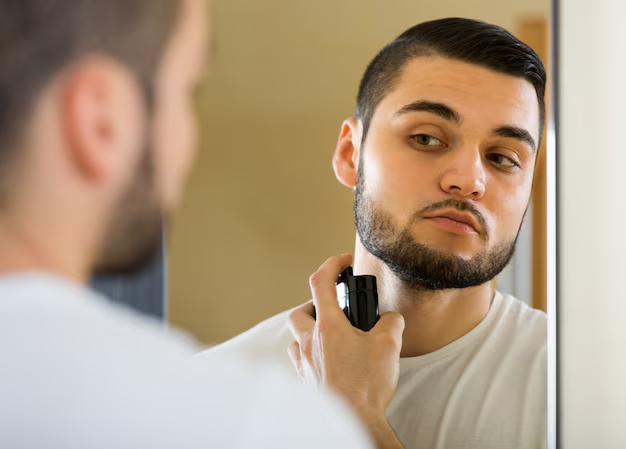Understanding Vitiligo: Demystifying the Skin Condition
If you’ve ever wondered about the white patches some people have on their skin and why they appear, you’re not alone. Vitiligo is a long-term skin condition that often piques curiosity due to its visible nature. While many seek answers about how to "get" vitiligo, it’s important to understand that vitiligo isn’t something that can be contracted like the flu. Instead, it’s a complex condition influenced by a variety of factors, and understanding these can help demystify it. Let's dive into the world of vitiligo, exploring what it is, what causes it, and how it affects individuals.
What is Vitiligo?
Vitiligo is an autoimmune disorder characterized by the loss of skin pigment. This occurs when the melanocytes, the cells responsible for producing melanin, are destroyed. As a result, white patches appear on the skin, and they can manifest anywhere on the body. The condition affects people of all skin types, but it may be more noticeable in individuals with darker skin tones due to the contrast between the unaffected and affected areas.
Key Features of Vitiligo
- Non-contagious: Unlike infectious diseases, vitiligo poses no risk of spreading from person to person.
- Varied appearance: The patches can serve a focal manifestation on one part of the body or be widespread, covering multiple areas.
- Unpredictable progression: The progression and appearance of the patches can differ greatly from one person to another, making each case unique.
The Science Behind Vitiligo: Causes and Triggers
Vitiligo’s exact cause remains elusive, but it’s widely accepted to be an autoimmune condition. This means the immune system mistakenly attacks healthy cells. However, research shows multi-factorial roots, there's still much to uncover in understanding its triggers and contributors.
Genetic Factors
Researchers have identified a genetic link, noting that vitiligo can run in families. If you have a close family member with vitiligo, your chances of developing the condition might be higher. Nonetheless, not everyone with a genetic predisposition will inevitably develop vitiligo.
Autoimmune Connection
As an autoimmune disorder, vitiligo often co-occurs with other autoimmune diseases, such as thyroid dysfunction or alopecia areata. This suggests a network of genetic and immune system components at play.
Environmental Triggers
While genetics and immune system responses build the underlying framework, environmental factors may act as triggers. These can include:
- Stress: Emotional or physical stress might initiate or exacerbate vitiligo.
- Skin damage: Injuries like cuts, sunburns, or exposure to certain chemicals might set off the appearance of new patches.
- Hormonal changes: Life events impacting hormone levels, like puberty or pregnancy, might also influence vitiligo onset.
Living with Vitiligo: Challenges and Adaptations
Living with vitiligo can involve navigating personal and social challenges. Since it affects appearance, it can sometimes lead to psychological and emotional implications.
Psychological Impact
- Self-esteem: Individuals with vitiligo might experience a dip in self-confidence, especially if the patches are prominently visible.
- Societal perceptions: Misunderstandings or stigma can contribute to stress, impacting one’s mental health.
- Coping strategies: Developing strong coping mechanisms and support systems is crucial for maintaining emotional well-being.
Social and Lifestyle Adaptations
While vitiligo doesn’t affect one's physical health, lifestyle adaptations can help manage the condition:
- Sun protection: The depigmented patches are more sensitive to sunlight, making sun safety paramount.
- Cosmetic solutions: Many opt for makeup or self-tanners to minimize the visual contrast, especially for special occasions or personal preference.
Medical Approaches: Managing and Treating Vitiligo
Though there's no cure for vitiligo, several treatments can help restore color or even out skin tone. These treatments vary based on individual factors like the extent of vitiligo and personal preferences.
Common Treatment Options
- Topical corticosteroids: These can help in repigmentation for some, particularly when used early in the condition's development.
- Phototherapy: Using UVA or UVB light, this treatment can stimulate repigmentation over time.
- Medications: Experimental treatments like immunomodulators can adjust how the immune system behaves, sometimes helping restore pigment.
- Surgical options: Procedures like skin grafts or melanocyte transplants may be considered for stable, small patches of vitiligo.
Acceptance and Alternatives
For those who choose not to pursue medical treatment, embracing vitiligo as part of oneself is a valid and empowering choice. Awareness campaigns and support groups can be invaluable for fostering acceptance and education.
The Future of Vitiligo Research
The scientific community is continually exploring new avenues in understanding and treating vitiligo. Advances in genetic research and biological insights promise a brighter future for individuals with vitiligo, potentially offering innovative treatments that could better target the condition’s root causes.
Key Takeaways and Practical Tips
Here’s a summary of essential insights and practical advice for those interested in vitiligo:
- Understanding: Vitiligo is an autoimmune disorder causing the loss of skin pigment, leading to white patches.
- Non-contagious: Unlike many other conditions, vitiligo cannot be caught or spread.
- Genetic and environmental factors: Both play crucial roles in vitiligo’s emergence.
- Management: Treatments range from topical creams to surgical options, but acceptance and support remain vital aspects of life with vitiligo.
- Stay informed: Keeping up with new research and treatments can provide hope and possibilities for those affected.
Summary of Key Points:
- 🧬 Genetics and Autoimmunity: Vitiligo often stems from genetic and autoimmune factors.
- 🌞 Protect Your Skin: Practice diligent sun care to protect sensitive depigmented areas.
- 💬 Seek Support: Embrace community and support groups for understanding and acceptance.
- 💡 New Research: Stay informed about advancements in treatment and understanding.
- 💖 Embrace Self: Acceptance is a personal choice, empowering individuals to view vitiligo as a unique aspect of themselves.
